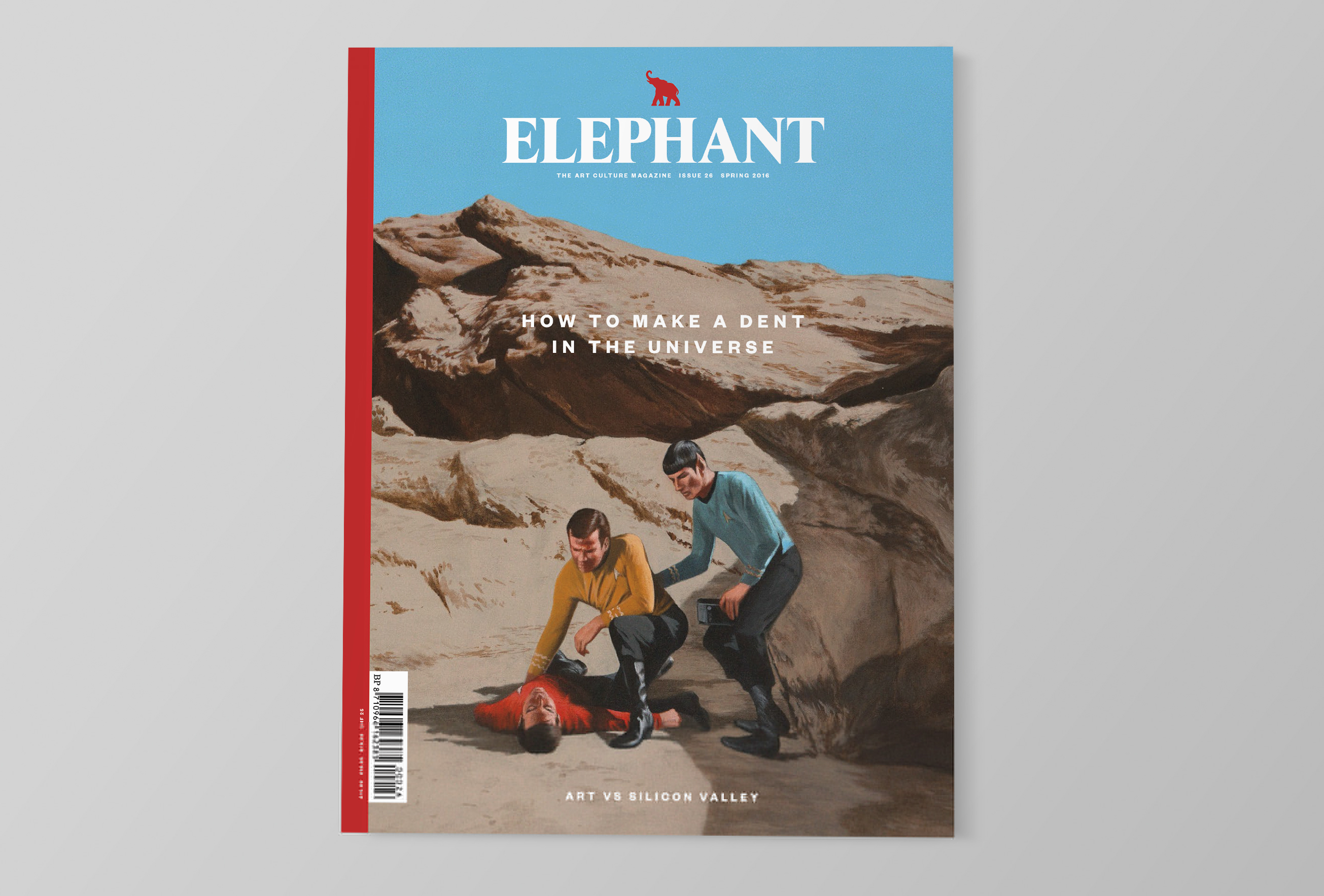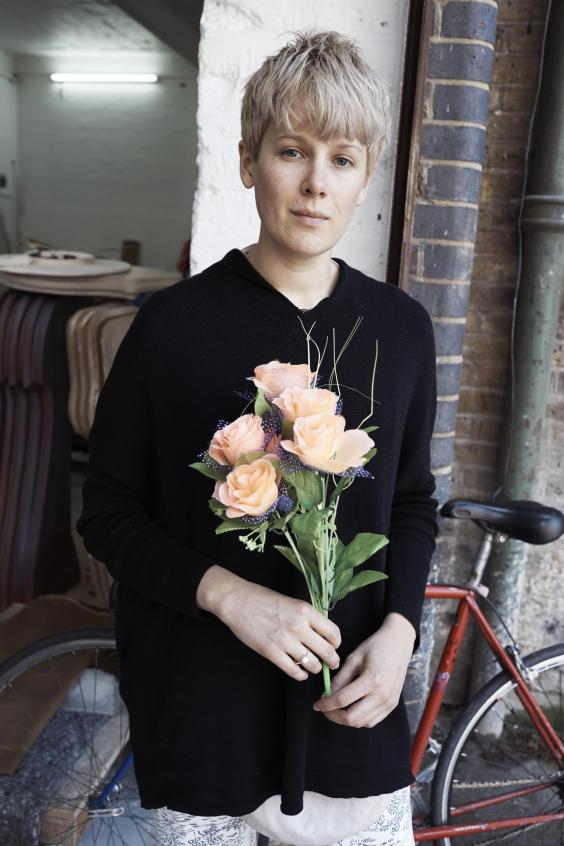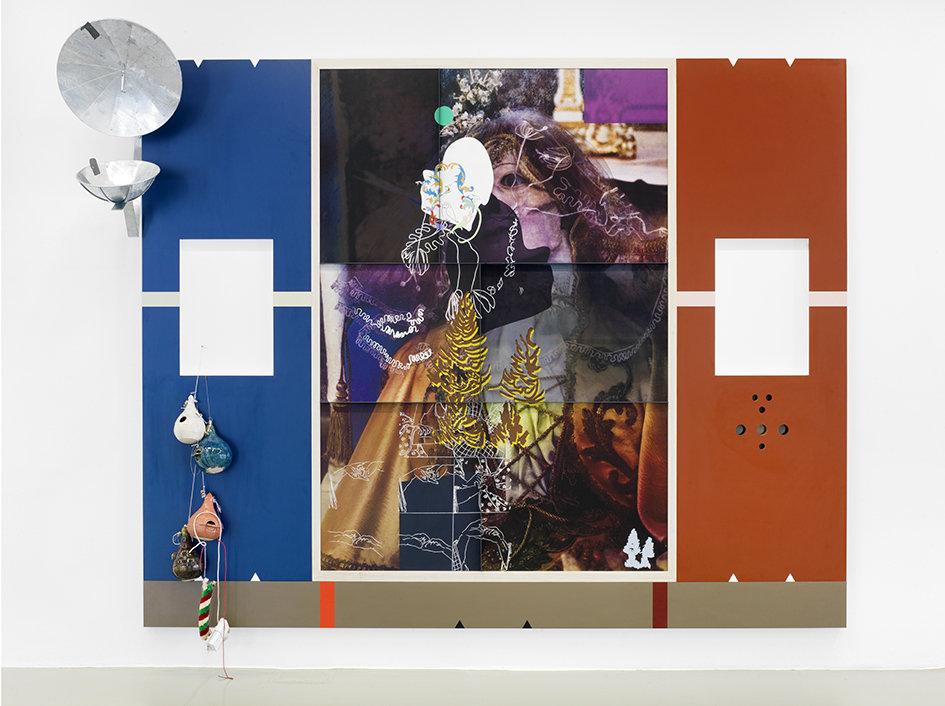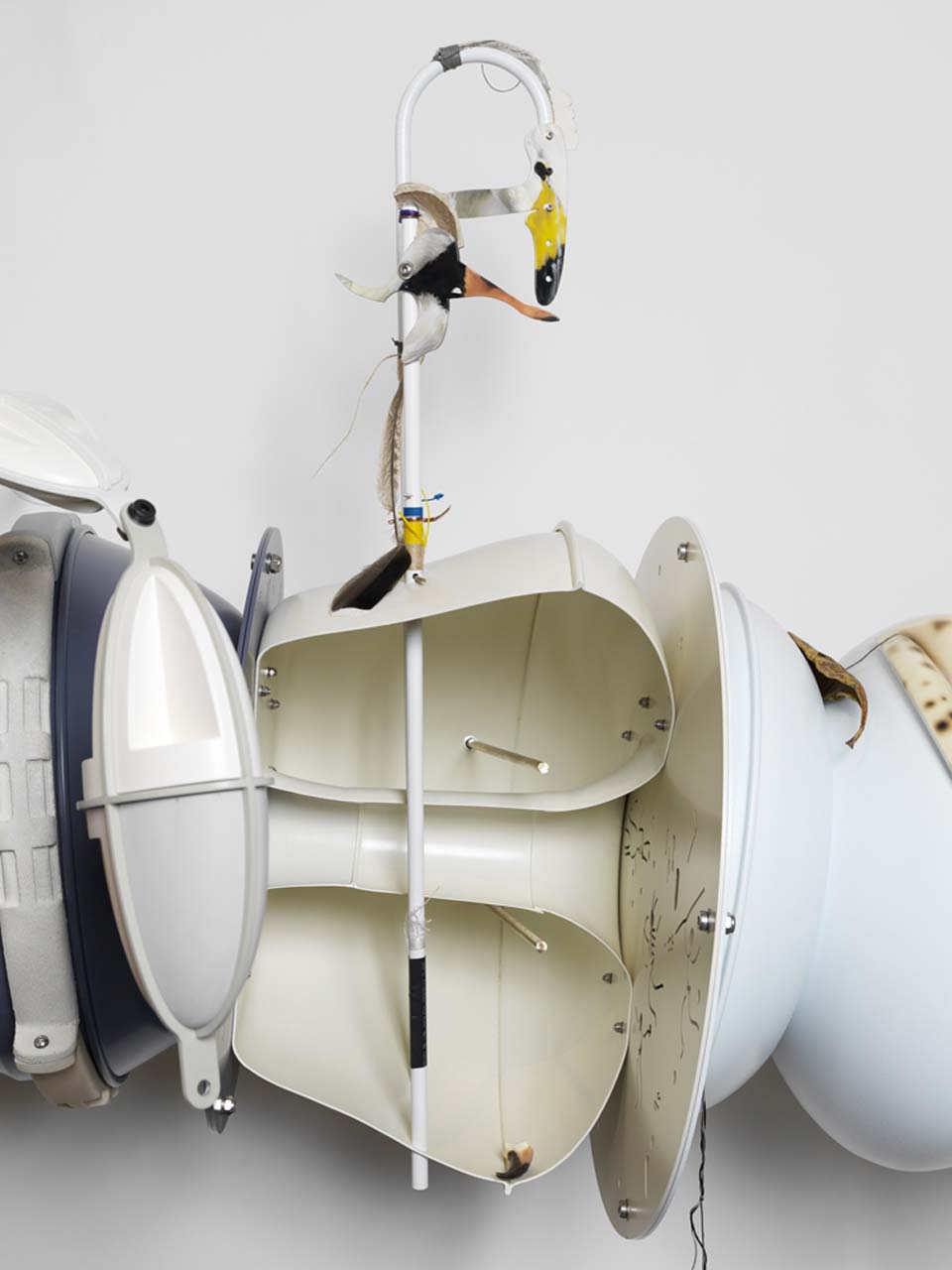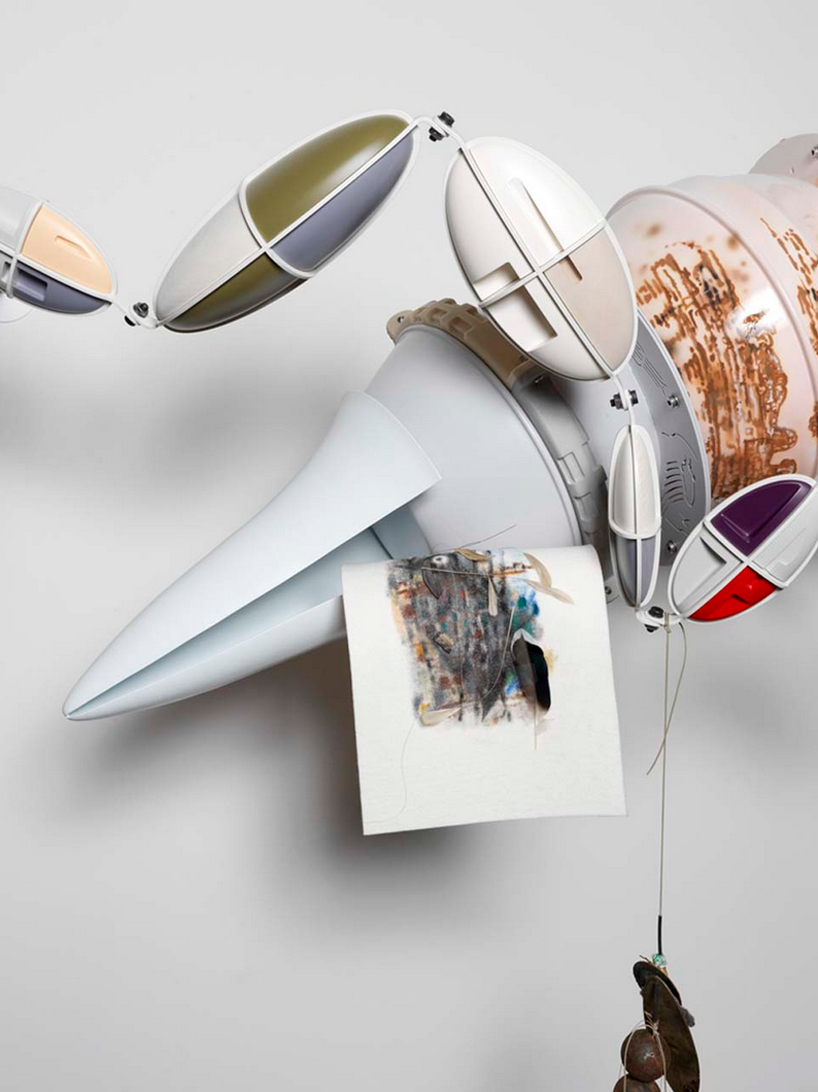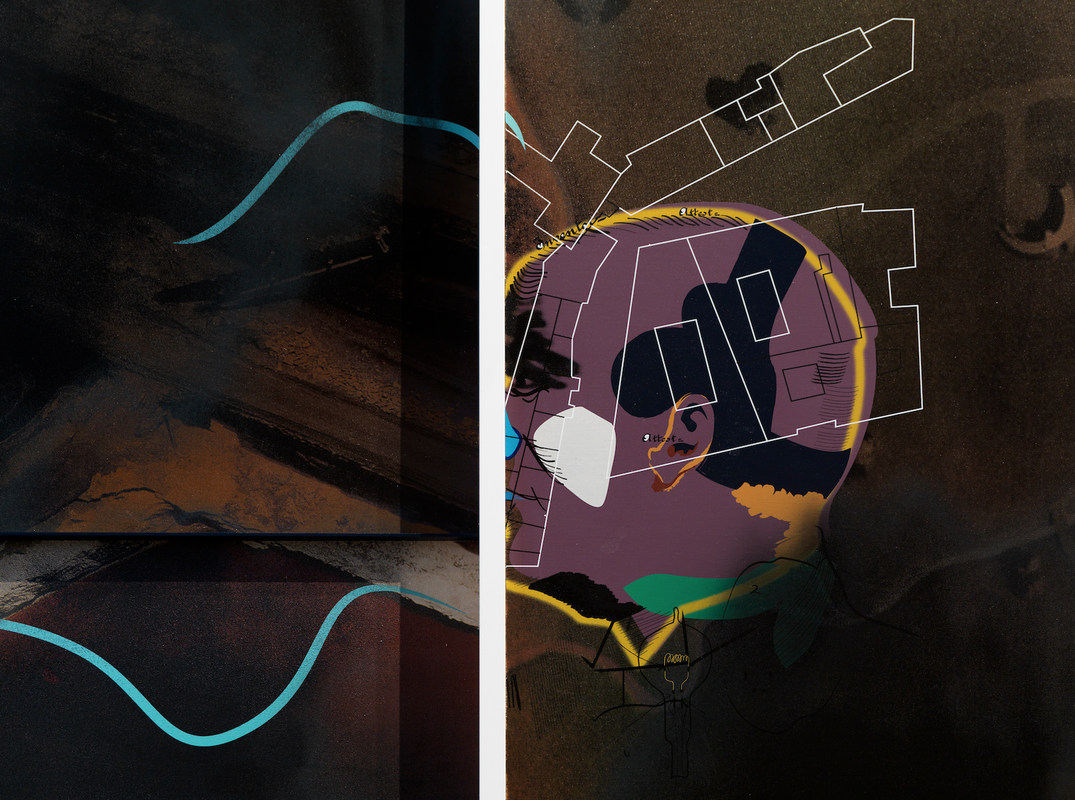
Sitting in her studio in East London, waiting for shippers to pick up the works she has been making for her latest show at Greene Naftali in New York, Helen Marten claims to be nonplussed by all the attention she and her work have been receiving of late. ‘Nothing has changed—my anxious way of working is entirely the same and any sense of pressure I feel is entirely self-initiated,’ she tells me. ‘Many of the new works straddle an uneasy existence between focused translation and distorted projection,’ she says. ‘There are objects that in my own convoluted way are acting as imitative models of known real-life constructions. There are supplementary forms of figuration; vector lines which desire to be read beyond two-dimensionality; objects with an approximated touch and whole constellations of smaller material parts which for me are grammatical without necessarily prescribing to an alphabet as we conventionally know it. More simply put, there are three sprawling new sculptures and five new screenprint paintings.’
Marten has a very particular way of expressing herself that is as evident in her way of talking about her work as it is in the work itself—sculptures, paintings and installations that tend to take over the gallery space. Her art is as hard to pin down as the artist herself. She lives in the worlds she creates: ‘What I make is how I see the world. It’s how I write, how I think, draw… Of course, to an extent, all of these activities are component pieces to a more total outcome, in a similar manner to parts on a game board—they’re circuitry, and they need one another to function.’
That world can be confusing for an outsider, with its cerebral puns and material paradoxes. I ask if there’s anything that hasn’t been discussed about her work already that she would like to explore more. ‘Not really,’ she returns. Yet she responds generously to questions—you can almost feel the rapid animation of her synapses as she talks, and it’s infectious. Perhaps it’s impossible to navigate her work in words, because in Marten’s terrain, linguistic tools are turned on their head.
‘I’m interested in language in its most primeval sense; I think a really beautiful way to think about it is language itself as the abstraction. It’s great because words don’t look like the things they designate so the reasoning is that this might be possible, however precariously, for images, too. Language is how we describe human methods of communication, so in some way I think that the obsessive importance I place on it is a way for me to destabilize our existing object-oriented hierarchies. I could fall in love with the aesthetic qualities of a thing, but be equally enthralled by its linguistic receptiveness. And this is hilarious because as much as we like to say things are “in dialogue”, they are absolutely never talking to us. So it’s a visibly masturbatory feedback loop: there I am, pasting my own language onto a reflective surface and getting off on the complimentary glow of false exchange!’
The irony of this statement doesn’t pass me by as later I sit and struggle to capture the reflective surface of her work in my own exchange with it. But Marten isn’t cynical. There’s the feeling of intellectual joy the artist finds in the divorce between language and meaning, the possibilities in the void between word and surface, package and product—a modern evolution of the signifier/signified dialectic, as the linguist Ferdinand de Saussure defines it. In awe of the infinite gap between these things, there’s a strong parallel too with the work of the Italian writer Italo Calvino, and a vision of the universe (as he writes in the novel Palomar) ‘as a regular, ordered cosmos, or a chaotic proliferation’. She creates an expanding universe with the microscopic.
Marten, like Calvino, is the artist offspring of two scientists. I wonder if her parents’ profession has influenced her, particularly in relation to the confidence she clearly has in redesigning reality. She describes them as ‘brilliant’, but says that her interest in science is more in its algorithms, in ‘aspects that have the potential to be exported to a metaphorical or imagistic definition—processes like electricity or osmosis or digestion’. Sometimes—another Calvinoesque quality in her work—her deep study of the world’s minutiae appears to be entropic. ‘Entropy is such a gorgeous word. I love that it is described as a “measure” of disorder. It has a whiff of a kind of crafted literary oxymoron, something that may be paradoxical too.’
Her Lunar Nibs (2015) piece at the Venice Biennale is a recent example of Marten’s love of paradox: a desultory ecosystem of fish + zips + chains + cotton buds = …? What’s the process that yields such results? ‘I’m actually extremely methodical in the way I work. I always start in a very basic incubatory period… things are percolating. I feel so pregnant and nervous with information when I’m just beginning and I often think about this time as a bristling state of laminated suspension. That’s grossly rhetorical, but what I mean is that all the intangible things I’m imagining are moving in a strange dance together, not quite totalized in terms of their relationships or movements, but certainly not random either.’
The influence of the internet has been alluded to in discussions of Marten’s work, and she has been referred to as a ‘digital age artist’, and with her interest in networks and ecosystems it might seem an obvious connection for a viewer to make. I do not raise the term post-internet with Marten, but she asserts that she is not interested in technology—her interest lies more in the physical, and especially in galvanizing textures and re-looking at everyday objects.
‘Texture is a very conceptual thing for me. I’m really interested in the point at which things become husked down to geometric memories of themselves, where a house, for instance, a pair of legs, or a cat could be communicated with huge economy and speed via just a few lines. The vector can become a mechanism of delivery. As incorporated extensions, even a simple nod towards a shape that might be reminiscent of a readymade form is quite literally a vocalizer of external things—an agent of the world outside art making. And this is the point where you can use recognizable authority, the obstinate fact of a universally existent thing—an arm, a teapot, an alphabet—and extricate it from its own sense of intentionality. Artists can exploit a materialist history of stuff and render it—and by render, I mean it almost in the culinary sense of breaking down, melting the fat—and reform it anew.
‘There is an efficiency to the narration of familiarity, but I am always surprised how quickly representation snags and starts to break down. Something festive or luminous can quickly stagnate and become depressing. It’s a big turmoil of sign language, but one hinged on the classic established idea that a sign is a physical form, which refers to something that it is not. We also ask substance to behave for us on a daily basis by virtue of interaction, so we’re all consummate agents in creating the physical world around us. Anybody who has ever handled a sponge understands that it might be capable of soaking up liquid. That is our haptic power; we’re lucky to be optically evolved enough to predict sensation. So the treachery in my work then might be a simulation of authority, a willingness to bastardize substance and ask it to behave in numerous unexpected ways. In fact, I’m certain that even the most definitive materials are whorish deep down; they are metaphysically flirtatious. Maybe that is their skeuomorphic power!’
As Marten is talking about the sponge, I recall something Adrian Searle had written in the Guardian about her first UK exhibition—Plank Salad—at the Chisenhale in 2012. ‘You have to go with it, or not go at all.’ With her highbrow credentials, I wonder how the average-minded person might find meaning in Marten’s work. Such imagination can be exhausting. Everything in Marten’s world seems to have an alchemical charge, and fires off a hundred cannons with each of her installation’s many component parts. What about those people who don’t go with her indefatigable flow?
‘My work is not about encountering a fixed empirical problem, but a deciding of how much of an archaeologist you feel like being, how many layers you want to unearth. I love the process of dragging legibility into crisis and getting to the kernel of something where you know it but cannot name it. I think this is something to do with making images that have an imposed itinerary quality, but are also disassembled to the point where they can be allowed to be noncommittal if required. It’s like finding out how to give devotion to a process of transformation but still not knowing exactly how everything might aggregate in the end.
‘And I’m absolutely languaging-every-move, which means I am interested in imposing content on every gesture I make—these things are fervently planned! But of course they often formally pre-exist in some small way or another, so there is syntax there already which I cannot govern. So in this way, I truly hope there is a shred of universality in all the things I make which allows them to communicate without bias at even the most basic level of understanding or initiation.’
To experience Marten’s work, perhaps it’s best to let go of the desire to understand according to logic: her all-encompassing environments are predicated on the analogical, and she revels in remodelling the world for us. But it doesn’t make it simpler. Is she a complicated person? ‘Probably. But I do always say what I think.’
